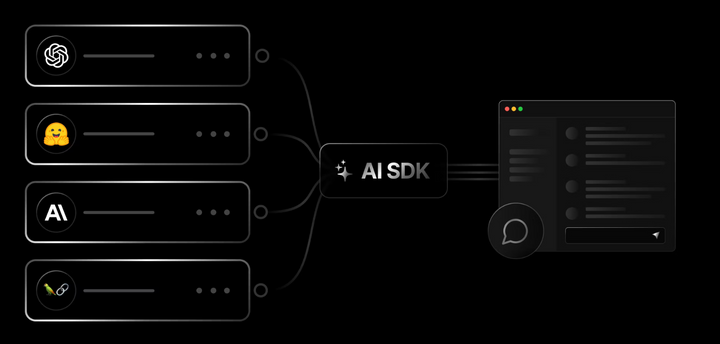How to Monetize Your AI Idea: Cracking the Code to Sustainable Revenue Streams
Learn how to monetize your AI idea and turn it into a sustainable revenue stream

Artificial Intelligence (AI) has taken the world by storm, and with its vast potential, you may have come up with a brilliant AI idea. But how do you transform your idea into a sustainable source of revenue? Monetizing your AI innovation is no easy task, but it's definitely achievable. In this blog post, we will delve into the secrets of monetizing AI and explore proven strategies to turn your AI idea into a profitable venture.

What is AI Monetization?
AI monetization refers to generating revenue from an AI project, product, or service. Unlike traditional hardware and software products that can be sold as one-time purchases, AI requires a more complex approach. It's not just about selling your technology; it's about selling the value it brings to your customers over time.
Types of AI Product and Service Monetization
To monetize AI effectively, companies should consider three main types of monetization paths: data-driven, usage-based, and hybrid models.
- Data-Driven Monetization: This model focuses on monetizing data by selling access to proprietary datasets or datasets derived from third parties. Companies can create revenue streams through subscription services for premium datasets or API marketplaces. Anonymization and data abstraction models enable organizations to leverage data monetization opportunities while ensuring privacy and security.
- Usage-Based Monetization: This model revolves around how customers use the AI product or service. For example, pricing could be based on usage metrics such as per-minute pricing for cloud computing environments. By aligning pricing with usage, companies can provide flexible and scalable monetization options.
- Hybrid Models: Hybrid models combine elements of data-driven and usage-based monetization. Companies can create innovative models that involve transaction volumes, subscriptions, or a combination of different pricing structures.
Each model has its own advantages and disadvantages, and the choice depends on the company's position in its AI journey and its specific goals.
Connecting AI Innovation with Business Strategy and ROI
To successfully monetize your AI idea, it's crucial to align your AI innovation with your business strategy and return on investment (ROI) goals. Start by measuring how your AI project is performing and assessing its potential for high ROI, even in the early pilot stages. Connect your AI pilots with key performance indicators (KPIs) and determine how AI can integrate with your existing business model. Consider the areas within your organization, such as supply chain, customer service, or marketing, that could benefit most from AI. By aligning AI with your business goals from the outset, you can pave the way for effective monetization later on.
Key Requirements for AI Monetization
Before diving into monetizing your AI idea, it's essential to meet three fundamental requirements:
- Novelty and Interest: Evaluate whether your AI innovation is truly new and compelling from both technological and business perspectives. If your idea lacks novelty or interest, it may be better to explore other use cases or pivot your approach.
- Target Customers: Identify your target customers and determine whether you are targeting business-to-business (B2B) or business-to-consumer (B2C) clients. Consider breaking traditional boundaries and think about the real market for your AI services. Explore potential opportunities to enter new markets or collaborate with partners who can benefit from your technology.
- Revenue Goals: Define how much revenue you aim to generate from your AI pilot projects. This will help you choose the most suitable monetization model, whether it's through license fees, consulting fees, monthly subscriptions, or one-time payments. The right approach depends on the value your product delivers and the effort required for customer adoption.
Embracing Customer-Centricity and Partnerships
To effectively monetize your AI idea, it's crucial to be customer-centric and understand their pain points. Identify how your AI applications can address these pain points and provide real solutions. By using customer intelligence in conjunction with market intelligence, you can ensure that your focus is on solving real problems rather than using AI solely for marketing purposes. Additionally, consider forming strategic partnerships with companies that can benefit from your AI technology or services, and vice versa. These ecosystem partnerships, both within and outside your industry, can create mutual value and expand your reach beyond what you can achieve alone.
Leveraging Your Existing Portfolio
One powerful approach to AI monetization is to look inward and explore how AI can enhance your existing product portfolio. Evaluate your current products and identify opportunities for AI-driven functionality enhancement. For example, can deep learning-based traffic optimization enhance your flagship high-capacity router? Can augmented reality (AR) technologies enhance your mobile app? By leveraging AI within your existing products, you can generate additional revenue streams and maximize the value of your current offerings.
Creating AI Service Wrappers
In addition to selling AI products, consider building value-add services on top of your legacy products and offering AI as a service. This approach allows you to capitalize on your existing products and create additional sales channels. Collaborate with your business partners to identify services that can be provided through your AI platform to make it more appealing and valuable to customers. By creating AI service wrappers around your products, you can cater to a wider range of customer needs and monetize your AI capabilities effectively.
Co-Development and Iteration with Ideal Customers
When monetizing your AI idea, it's essential to co-develop and iterate with your ideal customers. By involving them in the development process and gathering their feedback, you can validate that your AI solution is creating actual business value. Iterate based on customer input and real-world data to continually improve your product or service. Remember that AI projects are not static; they require ongoing refinement and adaptation to meet evolving market needs and technological advances.
AI Product and Services-Specific Pricing Models
Beyond the initial make-or-buy decision, carefully consider how to structure pricing for your AI projects. Breaking down projects into smaller services and deliverables allows clients to purchase only what they need, providing flexibility and cost-effectiveness. For example, you can offer add-on services that enable clients to train their own neural networks or outsource specific AI tasks. By offering customized pricing options, you can cater to different budgets and provide tailored solutions to your customers.
Marketing, Launch, and Post-Launch Monetization Strategies
Like any product or service, marketing plays a crucial role in monetizing your AI idea. Ensure that people know about your groundbreaking AI product or service through omnichannel marketing campaigns. Focus on early sign-ups and organic adoption to build a strong customer base. Strike a balance between upfront spending on marketing and ensuring sufficient resources for customer acquisition in the long run. It's essential that early adopters perceive the value of your offering before committing to paid subscriptions or purchases.
-Centricity and Partnerships
To effectively monetize your AI idea, it's crucial to be customer-centric and understand their pain points. Identify how your AI applications can address these pain points and provide real solutions. By using customer intelligence in conjunction with market intelligence, you can ensure that your focus is on solving real problems rather than using AI solely for marketing purposes. Additionally, consider forming strategic partnerships with companies that can benefit from your AI technology or services, and vice versa. These ecosystem partnerships, both within and outside your industry, can create mutual value and expand your reach beyond what you can achieve alone.
Leveraging Your Existing Portfolio
One powerful approach to AI monetization is to look inward and explore how AI can enhance your existing product portfolio. Evaluate your current products and identify opportunities for AI-driven functionality enhancement. For example, can deep learning-based traffic optimization enhance your flagship high-capacity router? Can augmented reality (AR) technologies enhance your mobile app? By leveraging AI within your existing products, you can generate additional revenue streams and maximize the value of your current offerings.
Creating AI Service Wrappers
In addition to selling AI products, consider building value-add services on top of your legacy products and offering AI as a service. This approach allows you to capitalize on your existing products and create additional sales channels. Collaborate with your business partners to identify services that can be provided through your AI platform to make it more appealing and valuable to customers. By creating AI service wrappers around your products, you can cater to a wider range of customer needs and monetize your AI capabilities effectively.
Co-Development and Iteration with Ideal Customers
When monetizing your AI idea, it's essential to co-develop and iterate with your ideal customers. By involving them in the development process and gathering their feedback, you can validate that your AI solution is creating actual business value. Iterate based on customer input and real-world data to continually improve your product or service. Remember that AI projects are not static; they require ongoing refinement and adaptation to meet evolving market needs and technological advances.
AI Product and Services-Specific Pricing Models
Beyond the initial make-or-buy decision, carefully consider how to structure pricing for your AI projects. Breaking down projects into smaller services and deliverables allows clients to purchase only what they need, providing flexibility and cost-effectiveness. For example, you can offer add-on services that enable clients to train their own neural networks or outsource specific AI tasks. By offering customized pricing options, you can cater to different budgets and provide tailored solutions to your customers.
Marketing, Launch, and Post-Launch Monetization Strategies
Like any product or service, marketing plays a crucial role in monetizing your AI idea. Ensure that people know about your groundbreaking AI product or service through omnichannel marketing campaigns. Focus on early sign-ups and organic adoption to build a strong customer base. Strike a balance between upfront spending on marketing and ensuring sufficient resources for customer acquisition in the long run. It's essential that early adopters perceive the value of your offering before committing to paid subscriptions or purchases.
Conclusion
Monetizing your AI idea requires a comprehensive understanding of the market, customer needs, and effective strategies for generating revenue. By following these key principles and adopting a customer-centric approach, you can unlock the full potential of your AI innovation and create sustainable revenue streams. Remember, successful AI monetization is a continuous journey of innovation, adaptation, and collaboration that can lead to long-term business success.
Subscribe or follow me on Twitter for more content like this!





Comments ()